#pushbuttons and all that
Explore tagged Tumblr posts
Text
Like this, and I'll send Jnx to bug your muse~
0 notes
Text


Not surprised that this abandoned 1905 abandoned beauty in Rock Island, IL has a pending sale. The 4bd, 2ba, 2,412 sq ft Victorian is all original and is only $129,900! Take a look at this steal.

Original mosaic floor in the foyer.

Beautiful! Look at the wood- the columns, the lighting, stained glass, and the bench on the landing.


Isn't this crazy for that price? I guess they left the old piano, too. Score.


Amazing. Intact fireplace even has the original insert.

Talk about an original kitchen!

This is a blank slate. That stove must really work, too.

The pantry. All original.

Pushbutton lights.


It's like another room up here on the landing.


The bedrooms need work, but look at the alcove in this one.


Bedrooms 3 & 4 are smaller.


Very vintage bath. Look at the sink and tub. I hope the new owner preserves them.

Large porch in the back.

Check out the potential in the attic.


They already started to finish it off.

Back porches. Fenced yard. 0.51 acre lot

Huge garage. There has to be potential for an apt. on the 2nd level.
https://www.zillow.com/homedetails/916-17th-St-Rock-Island-IL-61201/5198990_zpid/
309 notes
·
View notes
Text
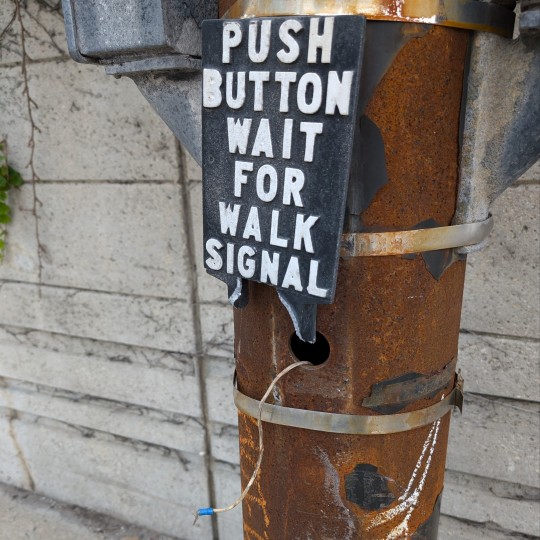
[ID: A photograph of a rusty stoplight pole, seen at more or less waist height; a sign on it reads "Push Button, Wait For Signal" but where the button would normally be there is simply a hole and a piece of wire sticking out.]
Yesterday on my usual route to the grocery store, I encountered a stoplight pole that normally has a pushbutton on it; as you can see, the button is no longer attached, but a loose wire hanging out of the pole indicates that this is a recent development.
I'd never really considered how dangerous this intersection is for drivers because I'm always on foot, but in describing this to you all I did come to the conclusion that it's way more dangerous than I thought. You have two sets of northbound lanes and two sets of southbound lanes -- one set of each slopes down from an overpass, and one set of each comes up from under, plus there's an east/west street coming out of a parking garage. I know that sounds confusing so for a visual:

This is looking south -- the northbound "underpass" lane is on the left, the "overpass" lane is next, then there's another "underpass" going south, and the "overpass" south lane next to the Target, with that car on the far right turning into the parking garage. It's...complicated.
Additionally, people drive fucking crazy around there and at night it's a popular area for street racing.
All of which to say there have been a number of brutal accidents there, so I looked around and sure enough, found some debris. I happened to snap a photo but it wasn't until I was cleaning out my pictures this morning that I realized oh...I do know where the pushbutton for the walk signal is.
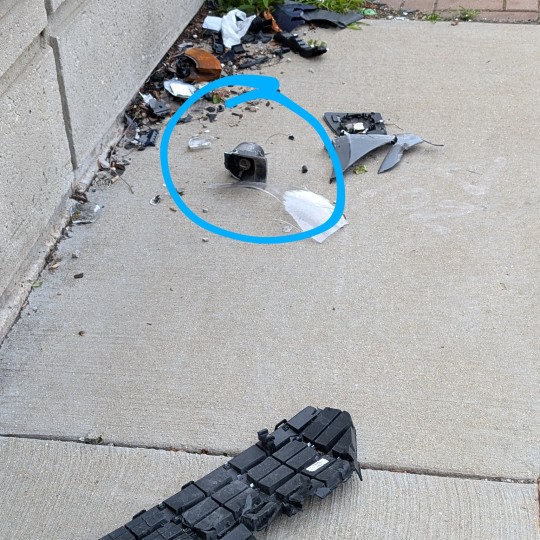
There's the bitch, about ten feet away, next to the remains of a taillight and a bumper.
[ID: A photograph of debris from a car crash, lying on the sidewalk; an oblong black object is visible in the foreground and some shards of glass and metal are also lying nearby. Circled in blue is a round object with a socket in the back, which is fairly evidently the pushbutton normally attached to the stoplight pole.]
123 notes
·
View notes
Text
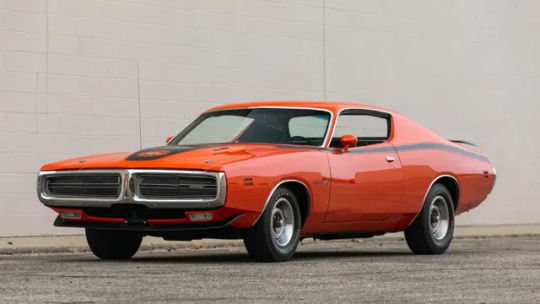
1971 Dodge Hemi Super Bee
The Ultimate Muscle Car of its Time
When it comes to legendary American muscle cars, the 1971 Dodge Hemi Super Bee stands out as an iconic symbol of power, speed, and style. Despite the challenges faced by the performance era during that time, this rare gem emerged as one of the most exceptional vehicles of its generation. In this article, we delve into the remarkable features and unique attributes that make the 1971 Dodge Hemi Super Bee a prized possession for muscle car enthusiasts.
Rarity and Authenticity
In the realm of automotive rarities, the 1971 Dodge Hemi Super Bee holds a special place. Among the limited production numbers, this particular model is one of only nine factory 4-speed Hemi Super Bees manufactured in 1971. What further adds to its allure is the fact that it was sold new through Mr. Norm’s Grand Spaulding Dodge franchise in Chicago. Documentation is key to verifying its authenticity, and this Super Bee comes with an extensive array of records, including the window sticker, invoice, retail order form, Bill of Sale, shipping document, and record envelope. This comprehensive documentation adds an extra layer of credibility to the vehicle’s rich history.
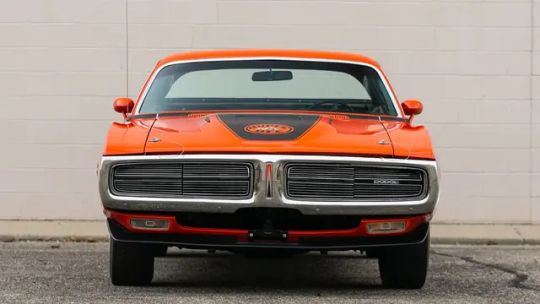
1971 Dodge Hemi Super Bee
Unparalleled Options and Performance
As one of the most highly optioned 1971 Hemi Super Bees known to exist, this Dodge masterpiece offers an array of features that elevate its status to a league of its own. Let’s explore some of the standout elements that define its exceptional performance:
Engine and Transmission
At the heart of this Super Bee lies the mighty matching-numbers 426 Hemi V-8 engine. Equipped with dual 4-barrel carburetors and hemispherical cylinder heads, this powerplant delivers raw power and exhilarating acceleration. What sets Chrysler apart from its competitors is its unwavering commitment to performance, as evidenced by the unchanged 10.25 compression, forged internals, and the adoption of a hydraulic camshaft. Paired with the A34 Super Track Pak, which includes the 18-spline Hemi A833 4-speed manual transmission and a 4.10-geared Sure-Grip Dana 60 differential, this Super Bee offers an unrivaled driving experience.
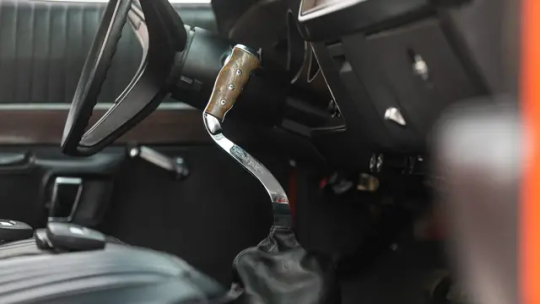
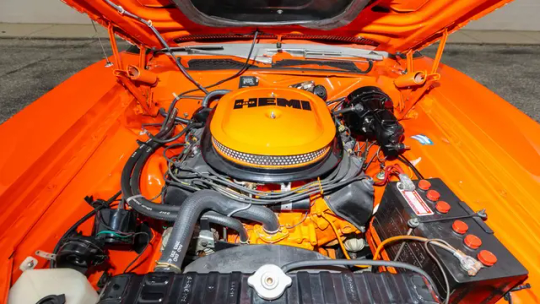
1971 Dodge Hemi Super Bee
Braking and Cooling
Safety and reliability are paramount in any high-performance vehicle, and the 1971 Dodge Hemi Super Bee doesn’t disappoint. It features power brakes with front discs, ensuring quick and efficient stopping power when needed. Additionally, the car is equipped with extreme cooling equipment, a vital component for optimal performance during intense driving conditions.
Exterior and Interior Styling
The exterior of the 1971 Dodge Hemi Super Bee is a sight to behold. Adorned in EV2 Hemi Orange with striking black striping, it exudes an aura of power and aggression. The premium optional concealed headlamps add a touch of refinement to its overall appearance. Other notable exterior elements include hood pins, color-keyed racing mirrors, and front and rear spoilers, accentuating its muscular and aerodynamic design.

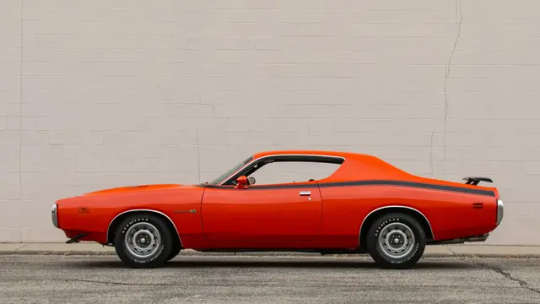
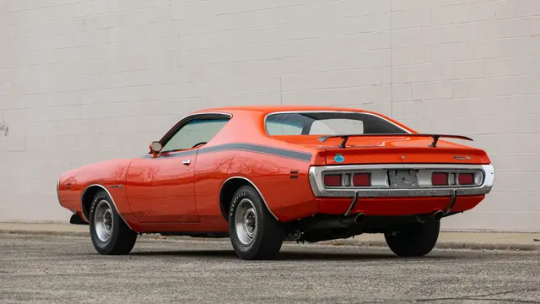
1971 Dodge Hemi Super Bee
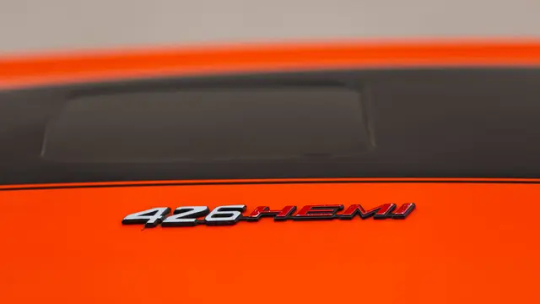
1971 Dodge Hemi Super Bee
Inside the cabin, the Super Bee offers a comfortable and stylish environment. The black vinyl bench seat interior provides a classic and timeless look, while the Hurst Pistol Grip shifter adds a touch of sportiness. The car is also equipped with a pushbutton Multi-Plex AM/FM radio, a Rallye dash cluster with a tachometer, and woodgrain-style trim, all contributing to an enhanced driving experience.
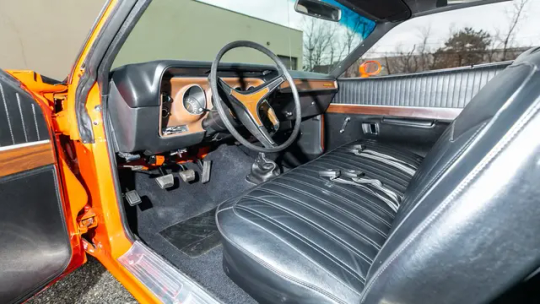
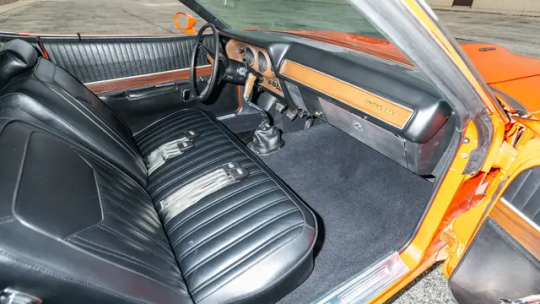
Wheels and Tires
Completing the Super Bee’s striking aesthetics are the premium Rallye wheels and Goodyear G60-15 Polyglas GT tires. These wheels not only enhance the car’s appearance but also provide excellent traction and handling capabilities, ensuring an exhilarating ride on the road.
Conclusion
In the realm of American muscle cars, the 1971 Dodge Hemi Super Bee holds a special place. Its rarity, authenticity, and exceptional performance make it a highly sought-after collector’s item. As the only year that the ‘Bee was built on the Charger platform, this Super Bee stands as a testament to Dodge’s commitment to creating top-of-the-line vehicles that capture the spirit of the muscle car era. Whether you’re a die-hard enthusiast or simply appreciate automotive excellence, the 1971 Dodge Hemi Super Bee is a masterpiece that continues to inspire and captivate generations of car enthusiasts.
#Dodge Hemi Super Bee#Dodge Super Bee#Dodge Hemi#Dodge#Hemi#Super Bee#car#cars#muscle car#american muscle#mopar#moparperformance#moparnation#moparworld
86 notes
·
View notes
Text
More Signalis, don't mind me. I can be a bit obsessive sometimes.
I love retrofuturism. There are many types, usually called something-punk and I pretty much love them all.
We all know Steampunk and Cyberpunk. A little less well known are Atompunk (e.g., Fallout), Raypunk (e.g., Mars Attacks, maybe? Amazing stories magazine), and Dieselpunk (e.g., Scythe).
Formicapunk / Cassette futurism is somewhere in the middle. To Gen X and early Millennials, the technology that forms the foundation of cassette futurism is intimately familiar. Growing up, my parents had cassettes, computers programs were stored on tape (at least at first) and floppies were not limited to the save icon in Microsoft Office. The first time I played Sim City was on an orange 3.5" floppy.
So maybe that explains why our generations feel a strong kinship with this branch of science fiction, which imagines a future if the technology had stopped there. Heck, TV shows like Loki are clearly targeting that side of us.
Making a mental note to talk about Loki at some point, because I just love the art in the series.
Anyway, back to Signalis. Everything in this game screams cassette futurism, from the objects you find and interact with, right to the interface of the game itself. Let me show you what I mean.
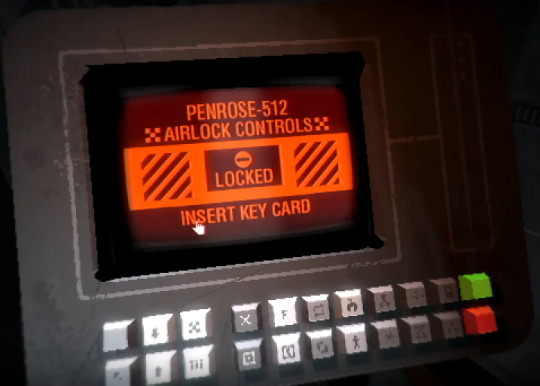
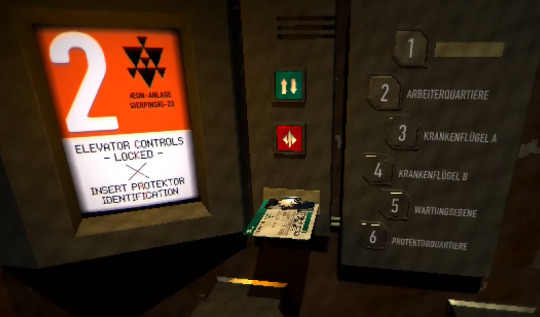
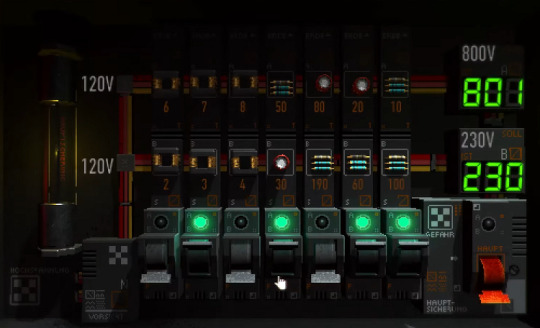




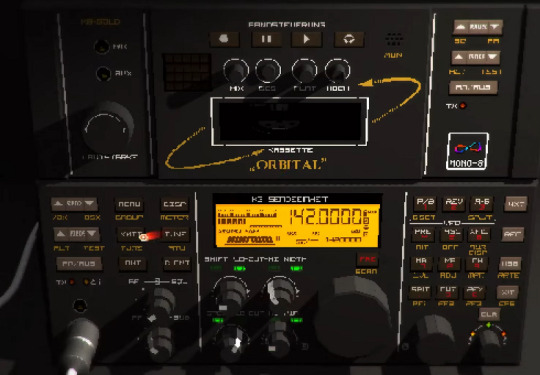
Everything operates with big pushbuttons, floppies, magnetic key passes, CRT screens...
I know I've said it before, but I find the art of the game to be really wonderful. It's very pleasing, coherent and evocative. It really contributes to the player's immersion, making this world that much more believable.
By the way, I am not sure who coined the term "Formicapunk" for this style, but I love the comic from Boulet about it. Well worth a read in my opinion:
https://www.reddit.com/r/cassettefuturism/comments/p6wg2f/formicapunk_by_boulet/?rdt=57641#lightbox
63 notes
·
View notes
Text
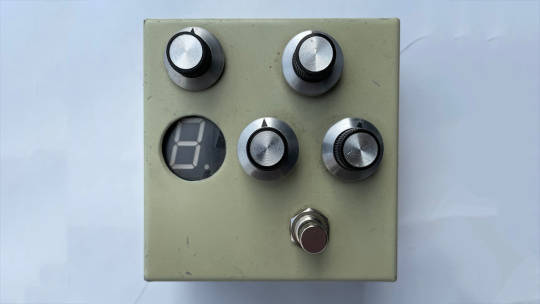


Montreal Assembly - Worng Side Of Uranus
"If you’re a regular Cabinet peruser, you’ve joined me as I waxed nostalgic for time periods I’ve never lived in, you’ve noticed me orating some company and component history, and you’ve almost certainly seen me talk about the best effects in their respective classes. And while there are plenty of classes and there is certainly enough love to go around, today I present you with my favorite pedal of all time: the Montreal Assembly Wrong Side of Uranus.
While many of you know Scott Monk and his amazing company for the Count to 5, he’s been in business for much longer than you think, and he’s made more things than most people know about. I first found out about him in 2009 while chasing wares by one of pedal history’s most sought-after builders, Etienne Blythe of Sonic Crayon.
If you were as into pedals as I was in the late-aughts… well, there’s a chance you still may never have heard of Sonic Crayon. However, at one time, Sonic Crayon’s wares were in extreme demand, with resellers ransacking the limited inventory and flipping the pedals for four times the price. His most famous may have been the Hollow Earth. His most unobtainable may have been the Anti-Nautilus. The one I wanted was the Moth.
The Moth was Sonic Crayon’s bitcrusher, and back in 2008 and 2009, that wasn’t an effect you could get just anywhere. However, Sonic Crayon had an old-school way of doing things: When he felt like making a batch, he did. Then he put 10 or so up for sale on his blog, and by word of mouth they’d sell out in minutes. One time, when checking his blog for a potential drop, I saw a new post where he said that if you’re tired of waiting for a Moth, there’s another Canadian guy making bitcrushers and that his were admittedly better. Who am I to argue? Let’s go.
That company was Montreal Assembly. At that time, Scott had only released two pedals, the Uranus and another insane device called Probability of a Fax Machine. When I heard the crude “basement demos,” I was sold. The problem: the sales tactics were exactly the same as Sonic Crayon—made and sold whenever. I never caught one. But my friend did.
My friend had gone off to college and left a present for me. I took a train and met their dad at a station in the suburbs, retrieved the box and opened it right there on the train. The Uranus was inside. When I got home I plugged everything I could into it. I messaged its creator, Scott, on Gmail Chat and geeked out when he answered.
I asked him if it was possible to add a mix circuit to the Uranus and Scott took time out of studying for signal processing exams to draw me up a somewhat complicated add-on schematic. Being somewhat intermediate with prototyping board, I hadn’t done a whole lot of my own stripboard layouts. Be that as it may, I cobbled it together. It worked. Now, I could blend the clean signal in with the bitcrushed one.
Despite being housed in a spray painted computer project box and featuring a barren aesthetic landscape, the Uranus is an impeccably engineered piece of sonic kit. Like most bitcrushers, there are knobs for bit rate and sample rate reduction. The third is volume. However, the bit rate knob is a pushbutton rotary encoder; as you turn it, it displays the bitrate in the seven-segment display. When the pedal is in bypass, the display flashes “bypass,” one letter at a time. Pressing down on the rotary encoder cycles through a slew of modes—ten to be exact—called things like “Dialup,” “Hostile” and more, including an incredible bitcrushed trem called “Blipo'' and a modulated sample rate mode called “Plunger.” It’s total labor-of-love stuff and I am here for it.
Mine is labeled 2010 and is one of a handful known to exist, and the only one with this mix knob. You may have seen one in a promotional photo that Strymon posted of its El Capistan being used in the studio by Godspeed! You Black Emperor, with the Uranus riding sidesaddle. Many, many people have never heard of it, and some of you may have never heard of Montreal Assembly before now. I urge you to change that.
At NAMM 2020, I actually saw Scott walking by our booth and I recognized him from some old demos. I ran down the aisle and tapped him on the shoulder. He looked right at me, then read my name badge, looked back up and said “Heyyy, Kula, how’s that bitcrusher treating you?” What a legend."
cred: catalinbread.com/blogs/kulas-cabinet/montreal-assembly-wrong-side-of-uranus
22 notes
·
View notes
Text
+006: The Xbox Adaptive Controller is for everyone

Addendums, Archives and Appendecies is extra, off topic writing in addition to the regular CANON FIRE entries. You can support more writing like this on Patreon.
Of the several mass market options for accessibility controllers, the Xbox Adaptive controller easily leads the pack. The initial package doesn’t include much, but in exchange it packs a huge host of features, expansive remapping software and compatibility with more devices than any competitor. Alongside a dedicated accessibility development team, it’s easy to see that Microsoft has real investment in gaming accessibility.
It’s those same features that make the Xbox Adaptive Controller a fantastic device for everyone. Marketing and coverage of the XAC has focused on the disability angle, but there’s been little talk or curiosity about how the damn thing works, and the absolutely tremendous features of this unassuming package. If you’re like me, and have any DIY spirit, or love the bespoke controls of arcade games, the XAC should have your attention.

The Xbox Adaptive Controller is designed similar to other adaptive setups, using standard 3.5mm TRS/TRRS headphone jacks to connect external controls. One of the least documented features of this system is exactly how many options there are for switches, outside the officially branded ones. The TRS connections enable the XAC to use not only dedicated accessibility switches, but any switch that uses TRS jacks. This includes several accessories for the 8bitdo Lite SE 2.4ghz, the 8bitdo Keyboard, or even something like sustain pedals used for synthesizers. There’s also a small industry dedicated to creating accessibility switches, and if you’re handy you can even create your own out of generic switches like pushbuttons, knobs, and flick switches.
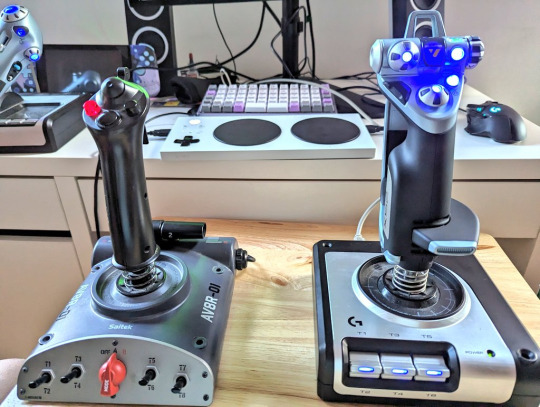
The XAC’s headliner feature--the one that sold me on the device, and puts it above all the rest--is the ability to plug in USB controllers. One either side of the XAC are USB ports, each which maps to one half of a standard Xbox controller, allowing you to access the left stick, right stick, face buttons and triggers by plugging in two devices to combine them into a single unit. Any HID gamepad can be plugged in, though you’ll need to experiment to see which ones are recognized, and which inputs are available to be remapped, since the XAC will only recognize a select number of them.
A costly series of individual switches can be replaced by a single controller, offering multiple inputs and alternative analog solutions such as sliders, trackpads, handheld joysticks or flight sticks.

As an example, I built a mech cockpit setup for Armored Core by using two flight sticks and a set of pedals. Each flight stick controlled one analog stick, with the triggers and thumb buttons used to control the arm and shoulder weapons, and pedals controlling the ascent and boost functions. The two large buttons on the XAC itself acted as the scan and repair functions, two important, but auxiliary functions.
I’ve also personally tested a few 8bitdo Switch controllers, as well as arcade sticks, which were able to be paired with the XAC as well.
A big advantage of the XAC is that by doing this through hardware, you can store multiple control profiles on the device itself, then migrate the setup between multiple devices, including other systems. Through the use of a controller converter, I’ve been personally able to use the XAC on multiple generations of Playstations and the Switch. All without the need to use software remapping.

If playing on the Xbox or Windows, however, you do get access to Xbox Assist--formerly Copilot--which allows you to pair the XAC with additional controllers, once again being read a single unit. This allows another player to assist in activating other buttons, or use one controller as the primary device, while complimenting it with buttons on your other controller.
I’ve used this to combine my controller with my pedal set, handling stick clicks with pedals, allowing me to sprint and melee but stepping on a switch. You could also use something like the Xbox Adaptive Joystick, and handheld joystick in the style of the Wii nunchuk, to control the primary movement, while resting another controller on a flat surface and pressing the buttons.
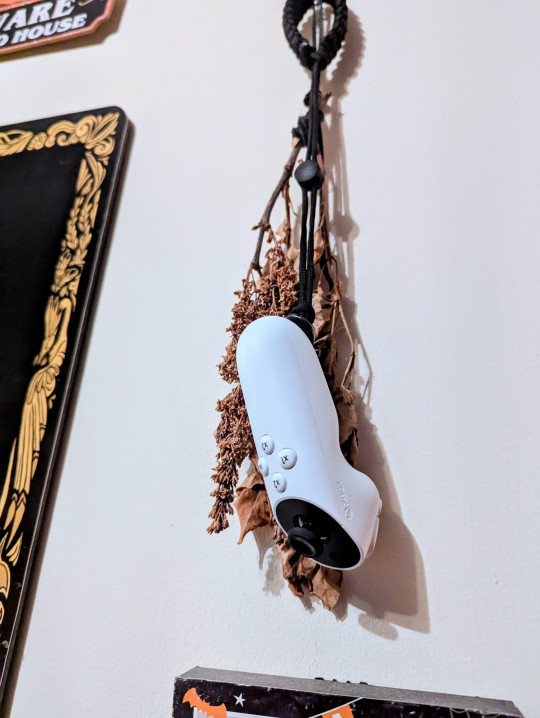
It’s worth noting that Xbox Assist isn’t restricted only to the XAC, and can be used with various other Xbox controllers, including the Adaptive Joystick, 8bitdo Lite SE, or just two standard controllers.
These options give a huge amount of flexibility to the controller, allowing you to mix and match what parts of a modern control setup work for you. Modern controllers have mostly agreed on a standard for button layouts and shapes, but at the cost of the more unorthodox options and ideas that made controllers part of the game or console experience.
The XAC gives you ways to interface with the same games, with remapping software that makes up for the often underwhelming options built into the consoles themselves. Buttons can even be remapped on the fly by physically plugging and unplugging cords into ports, allowing you to experiment with different setups quickly. It’s totally analog, and has the same satisfaction as manually rewiring devices and circuits.
Modern controllers are designed to be invisible. To meld into the background and allow experienced players to not think about how they control their characters. But when that doesn’t match someone’s ability or experience, the opposite can happen, turning a controller into something that fights against you. The same features that allow disabled people the flexibility to build a solution that works for them also gives everyone the option to change the way we interface with games, and build something new.
For interested parties, I've collected more info on the XAC below:
7 notes
·
View notes
Text
Oh, I did the inadvisable thing and ordered a kit to build an Ornament and Crime module. This one actually comes with the (discontinued and difficult to find) Teensy 3.2 microcontroller board required to run, though I'm seeing some info about how the same hardware can use a Teensy 4.0 instead? (I have a couple of those, so I may try one; the firmware docs are a bit vague so far.)
To explain to folks not steeped in the Eurorack scene, "Ornament and Crime" is a multipurpose digital module, something of a swiss-army knife of modular synth. It has 12 jacks — four for gate/trigger inputs, four for CV inputs, and four analog outputs — plus two rotary encoders and two pushbuttons, and an OLED screen, all run by the aforementioned Teensy. It was initially made to be something like a digital version of the Turing Machine module with built-in quantizing, but years of open-sourced development have added a lot more functions, built as interchangeable "apps" — and one of those apps, "Hemispheres", splits the device down the middle so it can simultaneously run two "applets" — to do things like various flavors of sequencing, quantization, envelope and LFO generation, random and chaotic CV generation, and drum synthesis, plus assorted other functions and utilities.
Some of my other modules are also multifunctional, but generally of narrower scope; the Sigma function generators can serve a number of analog functions when patched together or singly, and the Brains can produce any of 24 or so different voice modalities. But with the O&C, I'll be able to swap between vastly different categories of functioning, and since I have some experience with Teensy programming, it'll serve as a great development platform if I want to add functions.
2 notes
·
View notes
Text
CORE - WIP Scifi
Chris gently pulled back the dermaflex tissue, exposing the mechanics of… Well, whatever Core was to her today…
It had been a frustrating hour, jammed into what Core had called a workshop. It was more a narrow supply closet containing a beat-up dentists chair with a bunch of jury-rigged servos running off of an awkwardly mounted panel of pushbuttons. But it at least had working ventilation fans, which was good considering Core was giving off fumes.
Chris adjusted her posture, feeling a few joints in her back pop. There was next to no room on either side for someone to maneuver around and no tables to place any components. Unfortunately, this meant that the most effective place for Chris to position herself in order to get access to Core’s neck column was on top of Core herself. To that end, she found herself straddling the woman, a little above her pelvis. Leaning uncomfortably to peer inside the now exposed cavity.
“What are we looking at for damage doc?” Core’s voice chattered through her voicebox, which was propped up in the crook of Core’s shoulder and neck, connected only by wires. The voice was soft and muted, but with a little twinge of tin at the edges.
God Chris hated that voice sometimes.
Chris ignored her for a few seconds, investigating within using a long thin probe to push wires and mechanicals out of the way. Most of Core’s lower face was disassembled. Her entire jaw assembly sat nestled in the space between them.
Gently, she felt the tapping of one of Core’s fingers against her leg.
She sighed and put her probe down, pulling the destro-lens away from her eye and letting it fall on its straps around her neck.
“Looks like the root of the issue is a busted hydraulic seal, in the LS-Capitis assembly, far back of your neck. Fluid leaked down into the base of your neck column and locked up a few other parts.” She bit her tongue and didn’t mention that the only reason the damage hadn’t seeped further was because of the auxiliary gaskets she’d installed. That had been an extra Core had insisted on, and she could do without the smug comments and resulting migraine.
“As far as damage goes, your neck column is pretty much locked up indefinitely. I’d need to clean up the fluid, remove most of the lower assemblies, get them cleaned and reinstalled.”
She moved Core’s jaw up to the shelf that her chest formed at this angle and shifted herself back and onto Core’s legs.
“The busted hydraulic column that caused all this? Model line has been discontinued for almost a decade, nothing else on the market uses that seal either. But you know that. No OEM supplier support so anything I can find is going to be secondhand or custom made. So that’s a decision that you’ll have to make.”
She glanced at Core’s face, reading her like a book.
Core’s eyes were locked in place, staring at her unmoving like the eyes of a doll. Chris knew that this meant she was searching for her preferred components on the web, she could feel the small taps of core’s fingers on her legs as Core typed her queries and searched.
Chris knew better than to say what she was thinking, every time she told that girl she wouldn’t find anything cheaper or faster, she always found a hail-mary against all odds.
Core’s voicebox popped a little as her eyes returned to the micromovements that belied a conscious mind behind it all. Chris didn’t see any smugness in her limited expression this time. Even now, when it looked like a cheap Halloween decoration trying way too hard to be scary, she could never stay mad at that face.
“How long and how much?” Core said, the tone of her voice had lost some of its high range. She absolutely hadn’t found anything.
Chris shook her head, “If we move you to my workshop and you don’t mind an alternate source of supply for the column, four to six hours of labor and maybe 700ig for materials.”
“What is the alternate? No compatible components in your stock for less than 800ig.”
Chris smiled as her own smug satisfaction came bubbling to the top, a rare moment when it came to their tumultuous relationship.
“I’m one of your sole mechanics, aren’t I, I always squirrel away a few pieces off to the side for special customers. Altia CR5-997, it’s a hybrid servo-pneumatic system, but fits the form factor, actually replaces both of the LS-Capitis assemblies in one unit. Low draw, long life, little to no maintenance. Just have to top off a grease fitting every five or so years. I think you’ll like the noises they make when they operate too, very satisfying whirrs and purrs.”
“No uplink?” Core questioned.
“Nope, original market for Altia was for long range autonomous androids, so they couldn’t put sub-components in that would fail if the server connection went down. That applies to all of their stock up until you hit the CR9 lines.”
Core paused for a minute, resting her head back in the chair and staring at the ceiling. She fidgeted nervously underneath Chris.
Finally, she spoke up again, “Ok, fine.”
“Excellent,” Chris said, clapping her hands together, “I’ll get that pool of hydraulic fluid cleaned up best I can here. I’ll lock your neck in a neutral position, and we can make our way to my shop.” She paused and glanced over Core for a second, smiling knowingly. “Who's looking for you?”
She watched Core squeeze her eyes shut for a moment and felt her hands ball into fists.
“Hells Highwaymen, Black Smile…” She hesitated, “Lode.”
Chris laughed lightly as she pulled some tools from her bag, “Pissed off your new girl so soon?”
Core rolled her eyes, “We had a fight… yes.”
“Gambling?” Chris queried, it wasn’t a hard guess.
“Maybe.” Core confirmed.
Chris fished a small fist sized bag out of her pack and gently placed it as far down into the cavity as she could. It was made to absorb stuff like this.
“You really need…” Chris paused, “No, never mind, we’ve-”
“Yea,” Core interrupted, “We’ve been down that road before.”
They sat in awkward silence. After a minute or so Chris fished the bag out of Core’s neck. There hadn’t been too much fluid, and it appeared like the bag had gotten most of it. Enough that she felt comfortable closing Core back up at least.
“Sorry,” Core whispered. Chris felt a hand brush up the outside of her thigh. It didn’t feel sensual, more that it was the only part of her that Core could really touch in this position. In any case Chris didn’t answer, instead she started busying herself with putting Core’s throat back together.
Piece by piece she filled the throat cavity with the waiting components, retrieving the fasteners from the magnetic pad she had clipped to her waistbelt. She bolted Core’s voicebox back into its housing at the back of her throat before mounting her jaw back into place. She leaned in close and reached past Core to adjust the headrest up. Gently she positioned her head into as close a neutral position as she could before reaching in and tightening a few set screws that locked the rest of the joints into place.
Finally, she rolled the dermaflex fascia back up, press fitting it into the tight silicone slits that held it all together. The final outer covering she tacked with a touch of adhesive. It was a rough patch job, quite obvious, but it would be temporary.
Core worked her jaw, testing out the muscles that controlled her lower lip and tongue. Seemingly satisfied, she sat up, or at least attempted to best she could with Chris still straddling her. “Chris,” she said softly, her voice smoothed out by the softer coverings inside her mouth, “I said I’m-”
Chris pressed a finger against Core’s lips and shook her head. “Anything worth saying to each other about that has been said already.” She whispered. She meant it.
“I know.” Core said her entire neck teetering forward as she obviously tried to nod with everything locked up.
Chris snorted as she clambered backwards and off of Core, gesturing out. “You know the way to my place.”
“Walk with me?” Core asked, “I can’t keep my head on a swivel if it's locked up.”
“Maybe if you didn’t have to constantly scan for threats your neck wouldn’t be in this sorry state.” Chris chastised as she opened the door. ______________________________________________________________
Hey, I'm back in the saddle again Not entirely sure when Hangar 22 will be back up and running, I know it's been, what? 5 months since the last one? Well, I have a writing retreat/vacation lined up for next week, so we'll see what I can do spending ~8 hours a day writing.
I have plenty of other writings I've been chipping away at in the time I've been gone and hope to get some of them posted here in the coming weeks.
2 notes
·
View notes
Note
Hi bb(you already know who it is) thanks for answering my asks and I'm glad you appreciate it cause I aprreciate you🫵more mwahh💓💓
I get what you mean and I'm glad that you didn't make hima be flawless like what is shown in the kpop industry, the industry tends to show it's idols being delicate, lovely, happy, healthy, but honestly none of us know what's going on inside their heads they might have mental problems, physical problems, and might also compare themselves to other idols whether they are their seniors or juniors, and I'm glad that mimi is more confident and happy in her body and mindset, as well as our mingi, I'll always love him dearly and cherish him for his braveness❤️🩹
And indeed society is stupid and if you are confident in yourself they call you arrogant and if you're not they say you're weak and sensitive there's literally no right option except to be who you want to be and act how you want to act❤️🩹
And nowww I have another question to askk🧐 have the other members ever faced problems because of hima and mingi's relationship? (like company problems, schedules and other related stuff)
Love you bb mwahh😼💓💓
Hey again sweets 🥰I do appreciate it, I get excited to look at my inbox every time I see a notification! It also makes me feel happy that someone appreciates my content so much that they have questions about it 🥹💕
Honestly Mingi's been my bias since I got into ATEEZ because even if he's not the most confident he has such a beautiful personality, and it's amazing that we can see him gaining more confidence in himself! He's also so genuine, he screams when he's scared, he doesn't force his laugh, he does things that make him embarrassed but he owns it, he's just a big boba eyed chick 🥺All the members are just so amazing over all, I went to their Toronto concert - first time seeing any concert ever - and just seeing them running around during songs like 'Dancing like butterfly wings' or 'Dreamy day' made me smile so much it hurt.
Allegedly there's no rule against dating at KQ so there have never been many problems with their specific relationship, their CEO - who they call their 'dad' - was actually very happy for them since he suspected it for a while, but unfortunately didn't get confirmation from his own babies until Coachella. Her relationship with Mingyu was the one that saw more pushback company wise since no one was truly fond of their youngest - who already had a lot of eyes on her every move - being involved with someone from a group that had an even larger audience.
Matz were the members most anxious about their relationship since them breaking up could mean a drastic change in the entire group's dynamic, and talked to both about how they felt in depth about one another to make sure that this was a good decision. They were also aware of the toxic nature of her previous situation-ship with Mingyu and were afraid that their maknae's heart was still very vulnerable to the point of entering a relationship without much thought towards her mental health, although they quickly saw that it was true love.
The members did face some problems when Mingi broke the news to Atiny, with false 'fans' getting angry at the fact that no one had told them or that they were even allowing this in the first place. Much like some people tend to focus on WooSan as a potential ship instead of the two's absolutely incredible vocals, body control, personality, etc, there were times where they used MinAri to overshadow the rest of the group, thinking about the speculations more than every member themselves.
Since no one knew they were together until a few months ago there were no changes in schedules or opportunities, although lately they have started appearing as a couple at events, such as; The Porsche The Art of Dreams 'Capsule Dreamscapes #01 Seoul' event and pushBUTTON 2025 Collection Show. Their own industry has recognized them as the 'IT' couple of fourth generation and brands have begun using this for their own publicity, so there have been somewhat of a rise in opportunities.
As usual, thank you so much for your question sweets, love you! 😘Mwahhh!💕💕

10 notes
·
View notes
Text
Legend of Zelda Theme Park - Lost Woods (UPDATED)

The Lost Woods covers the southeastern corner of the park (corresponding to the Triforce of Courage) and, to suit its role as a vibrant enchanted forest, is the most lushly planted area of the park. Roughly a third of its footprint is devoted to planters filled with live trees, shrubs, and flowers, represented by the stippled shapes on the detailed map below. The artificial structures housing attractions, shops, and eateries are dressed to resemble hollow trees and caves. Most dramatic of all is the Great Deku Tree himself, rising well above the rest of the features in the area. A playful yet mysterious music loop of “forest themes” plays throughout the area.

Attractions
Spirit Train (Forest Station): One of the stations for the Spirit Train (see the Castle Town writeup) can be found here.
Picori Picnic Park: Inspired by The Minish Cap, this is an ideal spot to take a break from all the running around and eat lunch (and let the kids do more running around). A well-shaded area of picnic tables and benches sits alongside an elaborate playground, and everything is in the shape of giant flowers, leaves, mushrooms, and other objects to make you feel as though you’ve shrunk to Minish-size! There are also statues of Minish that guests can pose with for photos, and giant stumps and logs with windows to peer into to watch Minish going about their lives at home.
Koroks in Concert: Inside a huge hollow stump is a tiny theater-in-the-round where dozens of animatronic Koroks put on a musical revue! Some of the tunes in the 15-minute program will be familiar to anyone who has played the right games, but others are unique to this show. Guests are prompted to sing along with the grand finale and in so doing, encourage the Deku sprout in the center to grow!
The Great Deku Tree: He’s not a ride, nor exactly a show, but the guardian spirit of the Lost Woods is an impressive sight all the same. He continually grumbles and sighs and makes different expressions as he watches over the forest, and his spreading crown (the dashed outline shows its rough extent) is made from a system of hollow twigs and retractable artificial leaves in a variety of colors, so that his foliage can shift with the seasons. Moreover, he serves as the entrance to another attraction entirely…
Lost Woods Labyrinth: The largest attraction footprint in the Lost Woods belongs not to a ride, but a walkthrough—a “maze” that you can’t actually get lost in. Entered through the base of the Great Deku Tree’s trunk, the labyrinth winds in a convoluted fashion through a fantastical landscape of forest groves and small caves, with occasional branching paths that encourage repeat visits. The majority of the maze is located inside an enclosed show building, though ample skylights keep the ambient light levels synced with the outdoors for that extra bit of authenticity. The path takes guests through a variety of whimsical, mystical, and eerie forest scenes, from simple wild animals going about their lives to spider webs with scuttling Skulltulas to a Great Fairy Fountain. Some scenes include interactive elements–motion sensors cause Deku Scrubs to pop up and spit water, or a scene of Koroks at play includes a pushbutton that makes more of them descend into view on their little leaf-propellers.
The Grove of the Master Sword: At the exit of the labyrinth, guests have the choice to return to the main area of the Lost Woods…or take a picturesque but unlabeled path that leads to a quiet grove with a marble dais in the center, carved with the symbol of the Triforce and the emblems of its three virtues of Power, Courage, and Wisdom. And in the center of that is the pedestal where the Master Sword waits to be claimed by the Hero. You can try to draw it if you like. Do you think you’re worthy? (Is this basically a ripoff of Disneyland’s Sword in the Stone? Yes. Is the whole Master Sword stuck in a pedestal already a ripoff of Arthurian legend anyway? Also yes.) Another unlabeled path leads directly between the grove and the main area, and a third connects it with Epona Ranch. There are many ways to discover the Master Sword if you’re willing to explore the unknown.
Skull Kid’s Dash-n-Twist: This “mad mouse” style roller coaster is themed around the concept of chasing the mischievous Skull Kid through the forest treetops, with dangerous forest monsters popping up at every turn! Is he leading you to safety or hoping the Babas and Peahats will dispose of you?
Deku Gliders: This is a carousel-type ride with suspended cars shaped as if made from leaves, flowers, and twigs. The central mechanism is shaped like a huge flower, and the “stalk” extends upward when the ride begins, giving riders an elevated view of the surrounding area.
Shops
9. Outfitted For Adventure: If you didn’t manage to pull the Master Sword, never fear—this shop has you covered with toy and prop weapons (including replica Master Swords, we’re not stupid, we know what the people want), as well as souvenir clothing, hats, fanny packs, pouches, canteens, walking sticks, and other simple gear items for outdoorsy and adventurous types. Themed as a small, torchlit cave in honor of the one where Link was gifted his first ever sword at the very beginning of the franchise, the shop has that scene’s famous slogan painted prominently on one wall in the classic NES lettering: “It’s dangerous to go alone! Take this!”
10. The Fairy Fountain: Found one cave over from Outfitted For Adventure, this shop carries all things fairy-related, from books and art prints to dolls and “shoulder pet” fairy toys.The shop has its own background music, consisting of various versions of the famous “Fairy Fountain” theme alternating with other fairy-related music in the franchise.
11. Figurine Gallery: Another feature inspired by The Minish Cap, this kiosk built into the side of a tree (the structure is artificial, but the roof is basically a big planter for real shrubs), sells hand-carved wooden figures and decorative items, no two identical! Limited customization (color stains, a name etched or burned into a figurine base, etc.) is available on some items and can usually be completed while you wait.
12. Flower Cart: This is also a small retail location, selling all kinds of silk flowers and flower crowns. Many of them are generic, but others are made to resemble the fictitious flowers that occur in certain LoZ games—many colors of Pico Blooms (The Minish Cap), Silent Princess (Breath of the Wild), and even Bomb Flowers (various) with light-up “wicks.”
Eateries
13. Minish Mini-Nosh: If you didn’t bring your own lunch to the Picori Picnic Park, you can pick up something tasty at this fast casual eatery specializing in “miniature” food—bite-sized sandwiches, “baby” vegetables, “Minish-kabobs,” and more! Get them a la carte for a quick snack or mix and match a combo for a full meal!
14. Hollo’s Hollow: A callback to the potion-making Korok in The Wind Waker, this is a beverage shop much like Castle Town’s Potion Hut. Also on offer are healthy snacks such as whole-grain crackers, trail mix, and fresh fruit. Conveniently located right next door to Koroks in Concert so you can have something to wet your whistle while you enjoy the show.
15. Saria’s Bakery: Named for Link’s sweet and spunky childhood bestie from Ocarina of Time and located inside a huge hollow stump, this bakery offers a wide selection of rolls, buns, muffins, cookies, cupcakes, and other baked goods. Specialties include Kokiri Fairy Cakes (frosted pale blue and adorned with sugar wings) and a honey butter blend that’s terrific on all kinds of savory bread. Everything is made on-site and guaranteed fresh!
Miscellaneous
You might notice some unlabeled circles on the map. These are artificial tree structures that don’t house any publicly available feature–instead they are used as storage sheds, small employee break rooms, and general ambience.
10 notes
·
View notes
Text
Back From IBEX
I got back from IBEX last Friday. Finally kind of caught up. Over the next few days I will show the products that caught my attention.
First, glow in the dark switches. On my spaceship I bought www.cpperformance.com.
They are beautiful but they require all 5 leads be correctly attached. It took me asking for help online and a half a day to figure out how to do that.
At IBEX I found glow in the dark switches that only require 2 leads. Yes!
https://www.e-switch.com/product-catalog/pushbutton

#tiny house#lunar lander#boat building#nasa#lunarlanderdwelling#composites#saving energy#geodesic dome
3 notes
·
View notes
Text

Gorgeous 1829 townhouse fixer upper in Philadelphia, PA has 6bds, 3ba. I hope a flipper doesn't come in and modernize the bejeezus out of it. It has 4 levels and is so historic, it had a little shop in front. They're asking $950K, but when it's done, it will be worth about $2 or $3M, I bet. Maybe more. (I hate the remodel next door, though.) Well, let's see what we've got here.

So, the entrance to the home is on the side, b/c of the shop in front. I would have to open something in that shop, if I had a house like this.

This looks like an original gas light outside.


This is so beautiful, it needs an expert in historic restoration. Look at the cupboards, the doors, ceiling, and brick.

Closet in the corner of the room.


Step down from the residence into the shop. Is this cute or what?

And, it has a little restroom with a marble backsplash. Look at the light switch- it's the old pushbutton kind.

Back in the residence, there's a lot of restoration needed. Don't forget that the house has 4 levels.

These walls must be restored. No drywall. It looks like someone already started to paint the ceiling.

Great fireplace in here. Ditch that paint, it reminds me of an old public restroom beige.

I wonder why they have bars on this door and a little window. Who or what was in there? I wouldn't mind taking that plaster off and exposing the brick, but that's an outer wall. I don't know if brick would be on the other walls.

Stairs to the 2nd level. Note the steepness.

A front room on the 2nd level has a fireplace and the outer wall is brick. This must be a sitting room. B/c of the shop, the living quarters would start on this floor.

Closet behind the fireplace.

Pocket door to the kitchen.

I think that this would be the dining room.

Then this would be the kitchen.

This may be where the stove would go.

There was a bathroom in the room to the right.

Got to be a bedroom with 2 closets.

Here we are on the 3rd level. Someone started to dismantle the house, but the buyer will have to finish it.

They stripped all the ceilings, and maybe they could stay that way. In this bedroom, they have a lot of doors that were removed.

So, 2 brick walls in here. This home is going to need so much rehab, I'm beginning to think that if it's done right, it could be worth as much as $5M, now.

The attic rooms on the 4th level.

We can see how bad the ceilings are and why they have to be torn down.

Now, this is the basement. There's even a fireplace down here. This could be stunning w/a bar, like a little speakeasy.

This is cool- there's a door to go out on the roof. I wonder if you could put up a pretty iron railing and make a deck.

https://www.zillow.com/homedetails/1221-Pine-St-Philadelphia-PA-19107/10196788_zpid/
187 notes
·
View notes
Text

Nov. 13, 1963 - The era of the pushbutton telephone dawns next Monday. On that date, residents of Carnegie and Greensburg in western Pennsylvania will become the first in the nation to subscribe to the Bell Systems’ new “Touch-Tone” service. The service is expected to be generally available throughout the country by 1973. The most noticeable change from the standard equipment is in the front of the telephone itself. Gone are the 10-hole dials. In their place are 10 pushbuttons — three rows of three each, with the 10th — the “Operator” button — centered beneath. The chief advantage of the pushbuttons is speed plus ease and convenience of operations. Company tests have shown it takes an average of 10 seconds to dial a 7-digit telephone call. The same number can be “pushed” on buttons in two to five seconds. The two Pennsylvania sites were chosen for introduction of the “Touch-Tone” service because they were in one of the original test areas in 1960. Subscribers to the service next week will have to pay $5 for the installation of the new telephone plus a $1.50 monthly charge for each line into the house. One line can handle all the extensions. The AT&T’s version of the new telephone comes in all standard models and in a wide range of colors.
2 notes
·
View notes
Text
My big oscilloscope is a Tektronix 2213, a 60MHz analog 'scope made in the early 1980s. It has worked fine for what it is in most respects, except for one glaring issue: the power switch, a push-on push-off button on the front panel, was stuck. Fortunately, it was stuck in the "On" position, or obviously it wouldn't work at all, but turning electronic equipment on and off by yanking the power cord isn't the best practice, so tonight I finally took it apart to see what I could do about it. The back cover is fastened on with two torx screws, and the metal casing around the chassis by one more, so once those were gone I could see what was going on.
And what's going on is basically plastic fatigue.
See, while the switch button is at the front of the device, next to all the controls, the switch turns on and off the power supply, situated all the way at the back. The length of the 'scope — about 15"/38cm — is dictated by the length of the cathode ray tube, so it's a fair distance from the panel to the actual power supply. But while you might expect this distance to be bridged by, say, wires or something, 1982 Tektronix had a different idea. The pushbutton is just the end of a long bar of plastic that runs all the way from the panel into the power supply — when you push the button in, you're operating the switch with a long stick. The service manual shows this below: I've highlighted the bar in red, and the switch in blue.
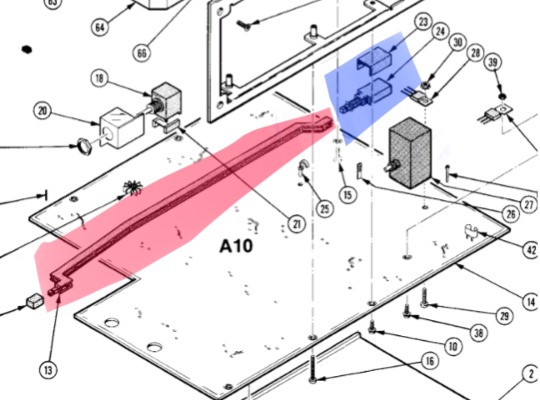
The trouble is that the bends in the bar have given the whole thing a bit of a tendency to buckle slightly upwards at about the point where, in the diagram, it crosses the edge of the bottom chassis plate. So while pushing in on it will turn the switch on, pushing again tries to activate the spring on the switch, but there's just enough upward force to have the button catch on its hole in the panel.
It's right now at the point where I can coax the button to slide out if I nudge it right when turning it off; I'm not sure if my best course of action is to try to find a replacement — at an unknown price — or to try to reinforce the existing bar somehow. Hmm.
4 notes
·
View notes
Text
Anti-Slip and Tactile Comfort Design for Metal Pushbutton Switches in Wet-Hand Operation Scenarios
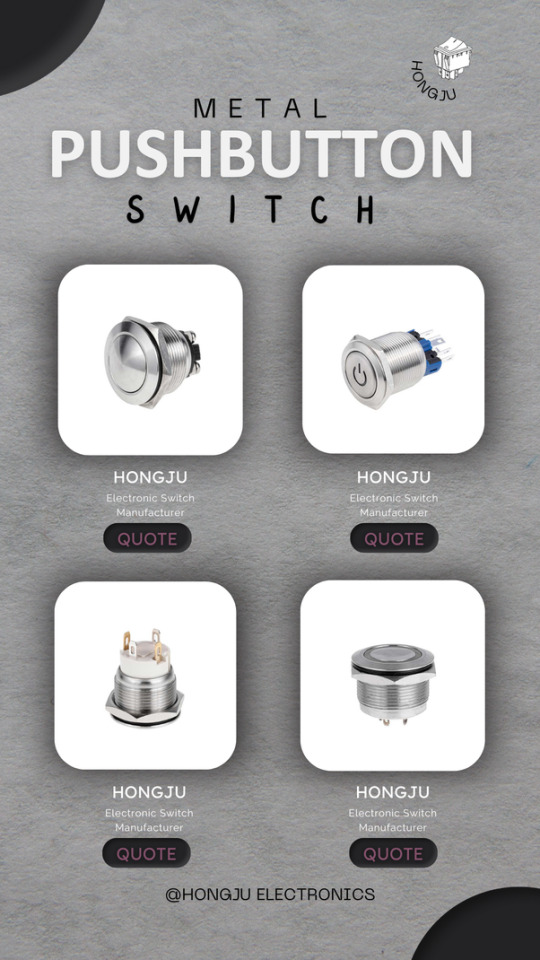
1. Introduction: The Hidden Pitfalls of Wet-Hand Operations
With increasing levels of automation and intelligent design, metal pushbutton switches are widely used in public and commercial facilities such as automatic faucets in public restrooms, commercial kitchen appliances, and electric scooter control panels. In these scenarios, users often operate switches with wet hands or in humid, splash-prone environments. If the switch design does not address these conditions, common problems like slipping, failed triggering, uncomfortable force feedback, and even corrosion can arise, shortening product life and hurting user experience.
For B2B equipment manufacturers, designing metal pushbutton switches that remain slip-resistant, comfortable, responsive, and corrosion-resistant under wet-hand operation has become a crucial differentiator.
2. Typical Wet-Hand Scenarios & User Pain Points
Public Restroom Faucet Buttons
Automatic faucet or semi-auto water valve pushbuttons are common in airports, shopping malls, and office buildings.
Pain Points:
Users often have dripping wet hands after washing, making it easy to slip or fail to trigger the button.
Water residue, soap scum, or scale can build up if the surface is poorly designed.
Poor anti-slip surfaces can harbor bacteria, harming hygiene.
Commercial Kitchen Appliance Buttons
In professional kitchens, chefs use pushbuttons on steamers, fryers, ice makers, or induction cooktops with wet or greasy hands.
Pain Points:
The environment is hot, humid, and greasy, which makes bare metal surfaces slippery.
Frequent cleaning with harsh detergents can corrode poorly protected buttons.
Heavy push force requirements plus gloves can degrade tactile comfort.
Electric Scooter Control Buttons
For scooters and shared e-bikes, the on/off or gear switches are often used outdoors, exposed to rain or snow.
Pain Points:
Buttons get wet from rain or sweaty palms while riding.
Riders need clear tactile feedback at speed to confirm pressing.
Internal water ingress can damage the switch over time.
3. What B2B Customers Really Care About
Is the button surface slip-resistant with effective texture?
Why It Matters: A slip-resistant surface is the most direct, effective solution for wet-hand operations. Even dry fingers can slip on overly polished metal.
Practical Design Tactics:
CNC or Laser Etching: Add micro-scale raised dots, cross-hatch patterns, or concentric ripples on the button top to increase friction.
Rubberized Rings: Embed a high-friction rubber ring (e.g. silicone, TPU) around the button’s perimeter to blend anti-slip and aesthetics.
Embossed Logos: Integrate a brand logo as a raised feature, providing slip resistance and branding in one.
Case: An airport restroom faucet button uses CNC-etched anti-slip cross patterns so even soapy fingers won’t slide off during pressing.
Does wet-hand use require excessive force?
Why It Matters: Metal pushbutton switches rely on robust mechanical travel to ensure reliable contact. But excessive push force can make wet-hand operation fail.
Solutions:
Optimized Spring & Stroke: Tuning the spring stiffness and travel to lower initial force while preserving snap-back.
Two-Stage Action: Light pre-travel plus firm actuation prevents accidental presses while staying easy to trigger.
Adjustable Spring Module: For premium equipment, allow manufacturers to select different spring modules for different tactile options.
Case: A Nordic e-bike brand reduced push force from 2.5 N to 1.5 N for winter riders wearing gloves. The button still maintains clear feedback and works reliably in snow and rain.
Is the surface corrosion-resistant and stain-resistant?
Why It Matters: Public restrooms, kitchens, and outdoor vehicles all expose switches to harsh chemicals, salt spray, or acidic residues. If the metal or coating fails, the button will corrode, stain, or lose its finish.
Key Materials & Treatments:
Premium Metals: Use 304 stainless steel, 316L medical-grade stainless, or anodized aluminum for strong corrosion resistance.
Surface Finishes: Brushed, sandblasted, hard chrome plating, or PVD coatings enhance corrosion resistance and reduce fingerprints.
Self-Cleaning Features: Add hydrophobic or nano-coatings to resist soap and water buildup.
Case: A global restaurant chain’s kitchen cooktop pushbutton uses 316L stainless with a PVD titanium black coating that withstands over 500 hours of salt spray without discoloration.
4. Going Beyond Anti-Slip: Better User Experience
Backlight for Night Visibility
Wet-hand operation often happens in tricky lighting. An anti-slip button with a ring LED backlight improves visibility in kitchens, restrooms, or rainy streets.
Seamless Waterproofing
Slip-resistant designs must maintain IP67–IP68 protection:
Dual-seal ring structure
Tight-fit tolerances for the button-to-housing gap
High-transparency seals that don’t compromise looks
Resistant to High-Pressure Cleaning
Commercial kitchens and public restrooms often use high-pressure hoses or harsh disinfectants. The button must resist long-term washdowns without water ingress or loosening.
5. Engineering Challenges in Mass Production
Delivering slip-resistant, corrosion-resistant, waterproof buttons means:
Complex Surface Machining: CNC or laser textures must be consistent across batches.
Rubber Inserts: Must not compromise the seal or create new water entry points.
Multi-layer Coating: Must withstand daily use without flaking.
Full-Scale Tactile & Leak Testing: Each batch must pass consistent force and seal checks.
6. Conclusion: Wet-Hand Design Adds Real Product Value
In an era of hardware homogeneity, B2B buyers expect pushbutton switches to do more than just switch on/off. In wet-hand scenarios, slip resistance, tactile comfort, corrosion resistance, and cleanability mean fewer service calls, safer operation, and better user reviews. Partnering with a manufacturer who can design and mass-produce such robust metal pushbutton switches is an investment in product lifetime and brand trust.
en.dghongju.com
0 notes